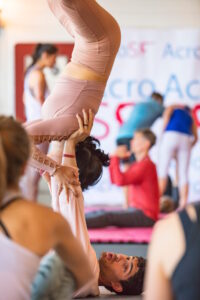
Pilates has gained recognition as a valuable training method for athletes due to its ability to enhance performance, improve movement mechanics, and prevent injuries. Pilates equipment, with its focus on core strength, stability, and controlled movements, offers specific advantages for athletes looking to optimize their performance and reduce the risk of injuries. In this article, we will explore the equipment used in Pilates, discuss injury prevention strategies in Pilates, examine the benefits of using Pilates equipment for athletes, and explore how Pilates can aid in injury management and rehabilitation.
What is the equipment used in Pilates? Pilates utilizes a variety of equipment to enhance the training experience. Common equipment used in Pilates includes the reformer, Cadillac (trapeze table), stability chair, and various props such as resistance bands, balls, and foam rollers. The reformer, with its adjustable springs and sliding carriage, provides resistance and support for a wide range of exercises targeting strength, flexibility, and stability. The Cadillac offers versatility for exercises that focus on upper body strength, spinal mobility, and overall body conditioning. The stability chair provides a platform for seated and standing exercises targeting lower body strength and stability. Props such as resistance bands, balls, and foam rollers can be incorporated to add challenge, variety, and targeted muscle activation to the workouts.
How do you prevent injuries in Pilates? In Pilates, injury prevention is emphasized through proper alignment, controlled movements, and progressive exercise programming. To prevent injuries, it is important to maintain proper form and alignment throughout the exercises. Pilates instructors provide guidance and corrections to ensure safe and effective movements. Progression is key in Pilates, as it allows athletes to gradually challenge their bodies without risking overuse or sudden strain. Proper warm-up and cool-down routines are also essential to prepare the body for exercise and aid in recovery. Regular communication with qualified Pilates instructors and listening to your body’s signals are crucial to prevent injuries and make modifications as needed.
Why use Pilates equipment? Pilates equipment offers unique benefits for athletes compared to mat-based Pilates exercises. The equipment provides adjustable resistance, support, and a more dynamic training environment. Athletes can target specific muscle groups, improve joint stability, and enhance movement mechanics using the equipment. The controlled resistance offered by Pilates machines challenges the body in multiple planes of motion, promoting functional strength and mobility. Additionally, the equipment allows for progressive overload and variety in training, enabling athletes to continually challenge their bodies and adapt to new demands.
How does Pilates help with injuries? Pilates can be instrumental in injury management and rehabilitation for athletes. The controlled movements and focus on proper alignment in Pilates can aid in restoring movement patterns, improving muscle imbalances, and enhancing joint stability. Pilates exercises can be modified to accommodate specific injuries and limitations, allowing athletes to continue training while promoting healing and recovery. The equipment in Pilates provides targeted support and resistance, facilitating safe and effective rehabilitation. By integrating Pilates into an injury management program, athletes can regain strength, mobility, and stability while reducing the risk of reinjury.
In summary, Pilates equipment offers a valuable training method for athletes looking to enhance performance and prevent injuries. The equipment used in Pilates, such as the reformer, Cadillac, stability chair, and props, provides targeted resistance, support, and variety in training. Injury prevention in Pilates is achieved through proper form, controlled movements, progression, and attentive guidance from qualified instructors. Pilates equipment aids in injury management and rehabilitation by promoting proper movement mechanics, muscle balance, and joint stability. By incorporating Pilates equipment into their training routines, athletes can optimize their performance, reduce the risk of injuries, and support their overall athletic goals.